
“Children think better on their feet than on their seats.”
— Mark Benden
Professor, Texas A&M University
(Ergonomics, Sedentary Behaviour, Physical Activity, Occupational Health)
Active children learn better. It is also a fact that physical development activities not only improve a child’s overall health and fitness but also enhance a child’s mental development and well-being. This in turn has a positive effect on a child’s capability to learn and perform better when the time comes to join a formal school.
Being involved in physical development activities creates healthy habits and has numerous benefits for the child. It helps improve confidence and self-esteem and in developing healthier social, cognitive, and emotional skills. It is recommended that toddlers are involved in physical development activities on a daily basis for a minimum of 180 minutes.
But children don’t just learn all the skills they need just by playing. There are some skills that need to be taught to support an active healthy lifestyle. Active children tend to have better health and cognitive outcomes when compared to those who have been less active during their early years.
An increase in movement and physical activity creates healthy habits. What parents need to keep in mind, however, is the activities they shortlist should be interesting for a toddler to want to engage. The absence of activities for physical development in early childhood impacts their readiness for school, impairs social development and retards academic achievement.
Children tend to struggle because of poor gross and fine motor development. Both these skills are critical as they underpin hand-eye coordination and handwriting because this includes the larger muscles in the torso, shoulders and neck, as well as the finer group of muscles in the hands, wrist, and fingers.
Activities for physical development in early childhood improve gross motor control and enables children to sit up, sit still, sit cross-legged on the floor, and hold their heads up for extended periods of time, while fine motor control strengthens and supports extended periods of written work.
If parents can teach their children to move well, they help them develop the motivation they need to lay the foundations for a lifetime of physical activity and better mental health.
Create a safe space for play
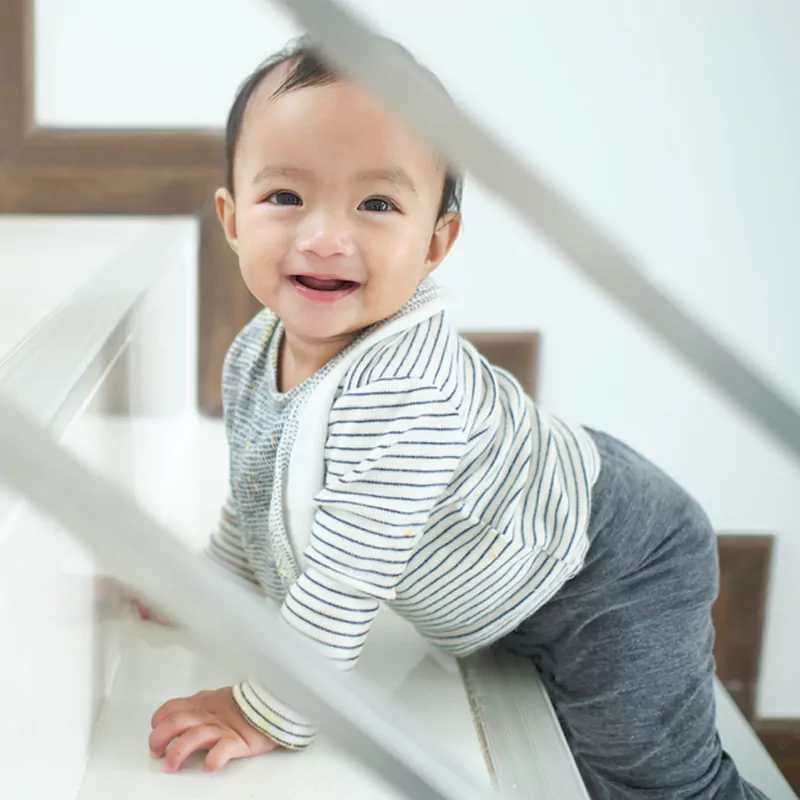
Before you begin planning play activities for your toddler, you first need to create a safe environment where your child feels comfortable and is familiar with the surrounding. At this age, toddlers are in an exploratory stage and will head towards wherever their curiosity prompts them to go.
When you are setting up a play area, it pays to see the space from a toddler’s point of view. See the world they will play in from their height and eye level. It helps if you can first move through the play space by crawling or walking on your knees. This will help identify spaces that might interest and tempt your child’s curiosity.
It will be important to consider how you place the furniture in the play area. As toddlers are still developing their gross and fine motor skills, they may find it difficult to navigate narrow spaces. However, a large open space may encourage them to move fast, leading to trips and collisions. The ideal solution is to use furniture that has round edges, toy organizers and other larger furniture items to divide the space into smaller play areas.
It will be of great help to your toddler if you can organize play items where she can find them easily. This will encourage your child to explore independently. Use open bins where she can go through items and sort them out according to her interest and what she wants to play with.
Remember, by creating a play area with your toddler’s interests and actions in mind, you will allow her to explore and play in safe ways and add to her mental, physical and social development.
Focus on developing basic physical skills first
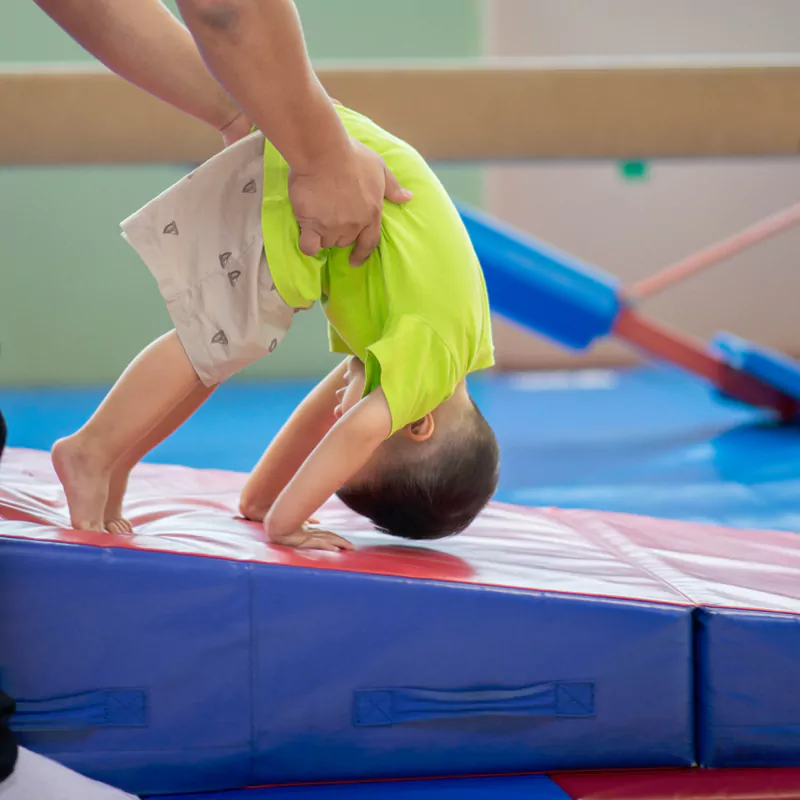
Amongst the most effective way to ensure your toddler takes part in physical development activities is by planning around the basic physical skills – for example, jumping, crawling, bending, galloping, skipping and catching.
Involvement in physical activities from a young age has various benefits which go beyond only physical development. It can help a child improve physically, mentally, socially and emotionally as well. Identify three or four skills you want to focus on first, and plan activities based on these skills on a daily basis. Remember to keep adding new physical activities to this list on a regular basis.
Make sure interactive physical development activities for infants involve multi-sensory activities that create an enabling environment for active learning experiences in a fun yet creative way. Such activities will encourage and help your little one to be unique, resilient, and confident. Engaging in physical development activities promotes bonding, teamwork and a love of learning from an early age.
By involving your child in new and exciting themes, you will encourage her to be ready to explore her emotions, interact with her peers, bond with her caregivers and lay the foundation for strong and independent learning.
Ideas for babies
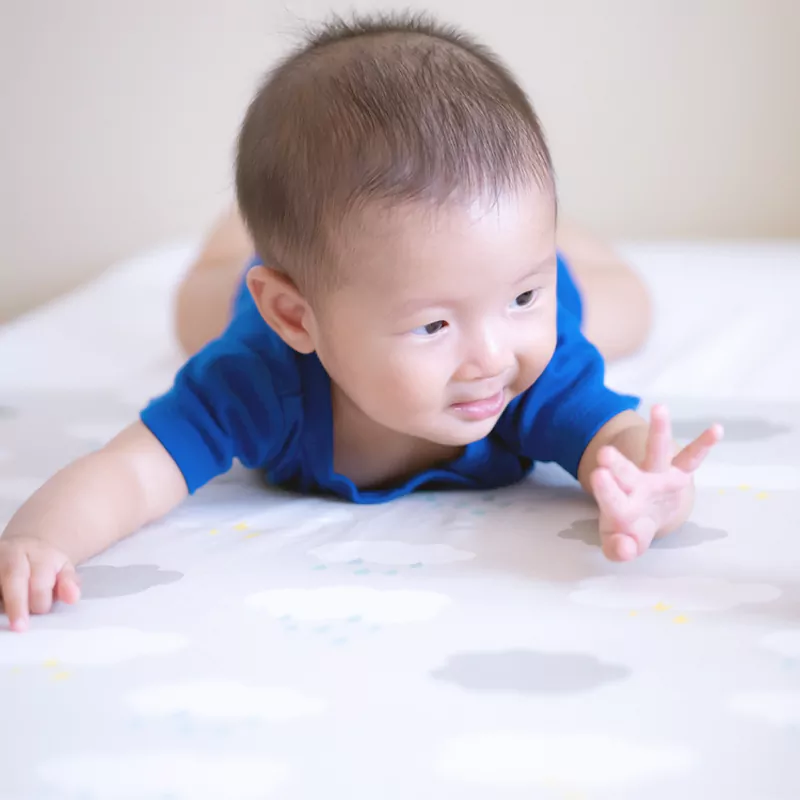
Tummy time can be made more fun and interesting for babies by placing them on surfaces that have different textures, fluffy blankets, towels, and play mats. Spread toys of varying shapes, sizes, and colours around the baby. Place them just out of reach to encourage her to lift her head up, look around, try to reach, roll and belly crawl. Don’t forget that you can function as a piece of climbing equipment by lying down in front of her so that she has to climb over you to reach the toy she wants. Repetition of activities for a baby is good for her.
Ideas for toddlers
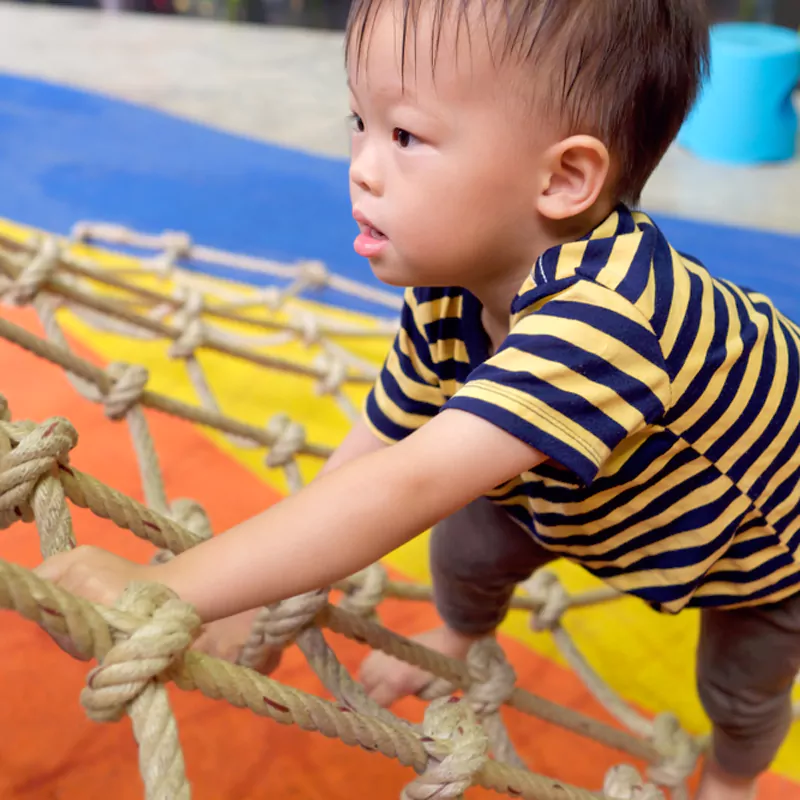
A toddler is always full of energy and sometimes you might find it difficult to keep pace with her. Your toddler may love things that she shouldn’t play with — crockery, TV remote, display shelves, plug points. (always make plug points childproof by covering the holes with tape). Keep her toys, readily available in the play area. Keep introducing a variety of safe household items for her to explore — wooden spoons, pots, and plastic cups. Remember to actively play ‘hide-and-seek’, and ‘peek-a-boo’ as these will always excite your child to interact actively.
Ideas for pre-schoolers
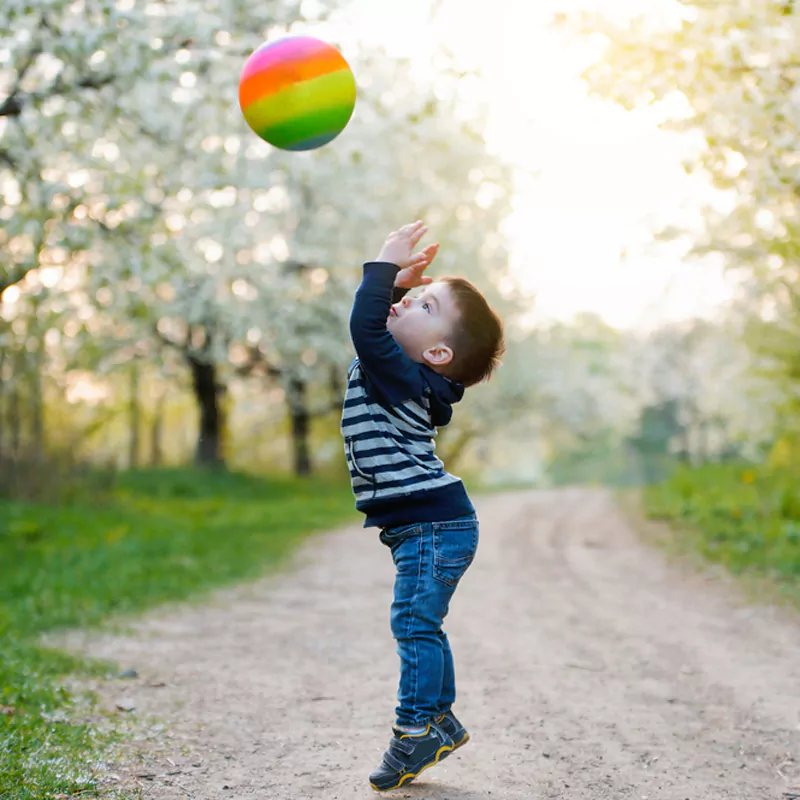
Think of combining learning with physical development activities. For example, counting while doing hopscotch or skipping, playing ‘statue’ to practice balancing. Pre-schoolers enjoy ball games that allow them to learn to bounce, roll, kick, and catch a ball. They can learn these skills by tossing a balloon into the air and giving it wack. Or practice dunking a paper ball into a wastepaper basket. Consider involving your pre-schooler in household chores; we may not enjoy it ourselves, but helping out with the dusting, laundry or sweeping the floor is another way to keep her moving.
Physical Activity for Mental Development
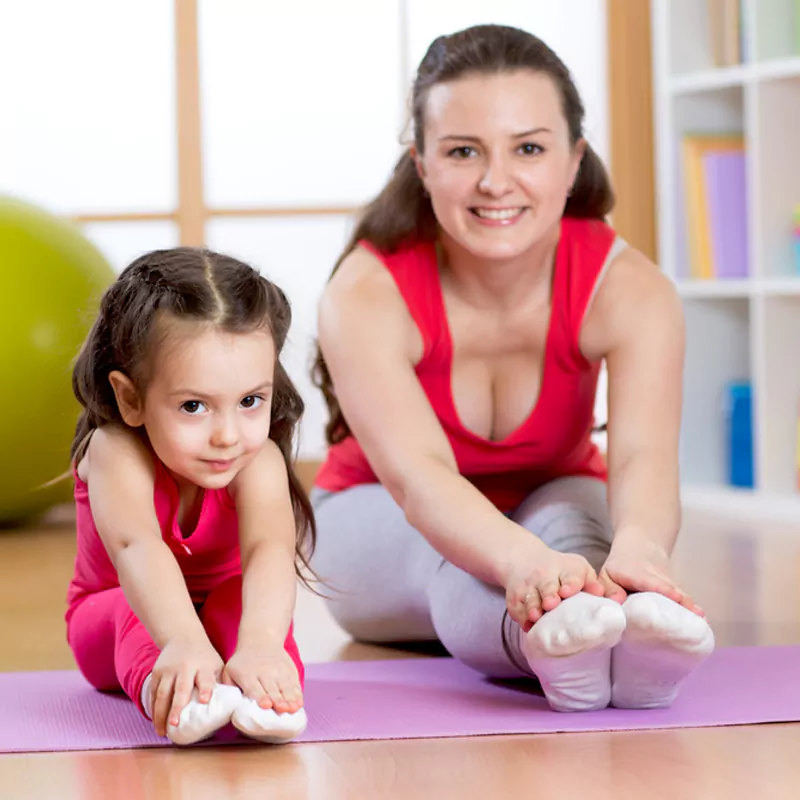
Toddlers don’t just magically learn all the skills they need just by playing. Parents can help create a play-based curriculum so their toddlers will have lots of opportunities to learn. Some skills can be taught, and these skills are also the ones that are needed to play many of the games and sports later on to support an active healthy lifestyle.
Boost brainpower & enhancing cognitive ability
When you engage in physical development activities, the flow of blood to the brain increases. This greater flow of oxygen-rich blood to the brain assists in the creation of new brain cells, which helps to improve overall brain performance. It enhances brain function and helps to focus, and improves memory and thinking skills, which are all major milestones in a child’s developmental progress.
Accelerate academic learning
A positive correlation exists between a child’s performance and her level of involvement in physical development activities. This demonstrates quite clearly that toddlers who regularly exercise develop a better ability to learn new things and are likely to perform better in school. Physical activity triggers the release of active brain proteins which help increase levels of concentration and decision-making. Motivating a child to learn more and apply what she learns in positive ways.
Stabilise moods & reduce anxiety
When a body is exercised, it releases chemicals called endorphins. These “feel good” hormones trigger a positive lift to the mood. Children experience reductions in stress and anxiety as these endorphins help to moderate the brain’s response to stress and elevate feelings. When a child’s overall health and fitness improve, it also boosts her self-esteem and gives a sense of accomplishment and positivity.
Develop and improve social skills
When your child takes part in physical development activities, it allows her to meet new people and create new relationships, enhancing your child’s language and communication skills. A different kind of bonding comes into play, giving children a sense of belonging and companionship, with the potential to decrease loneliness and improve their socialising skills.
Taking creativity to a higher plane
Focused physical development activities daily stimulate brain activity, sparking creative impulses and helping overcome mental blocks. Triggering bursts of creative thinking and enhancing imagination. Hence it makes sense to engage children in any form of physical activity, and then involve them in a creative activity, such as arts and crafts or creative writing.
Maintaining mental balance
It is worth noting that young children begin to establish behaviour patterns from an early age which has a bearing on their immediate and long-term mental health. Involving them in multi-sensory programs helps create an enabling environment for active learning experiences in a fun yet creative way. By engaging children in regular physical development activities. from an early age, you are ensuring that they maintain a healthy mind and healthy lifestyle in the future.
Nurture lifelong habits
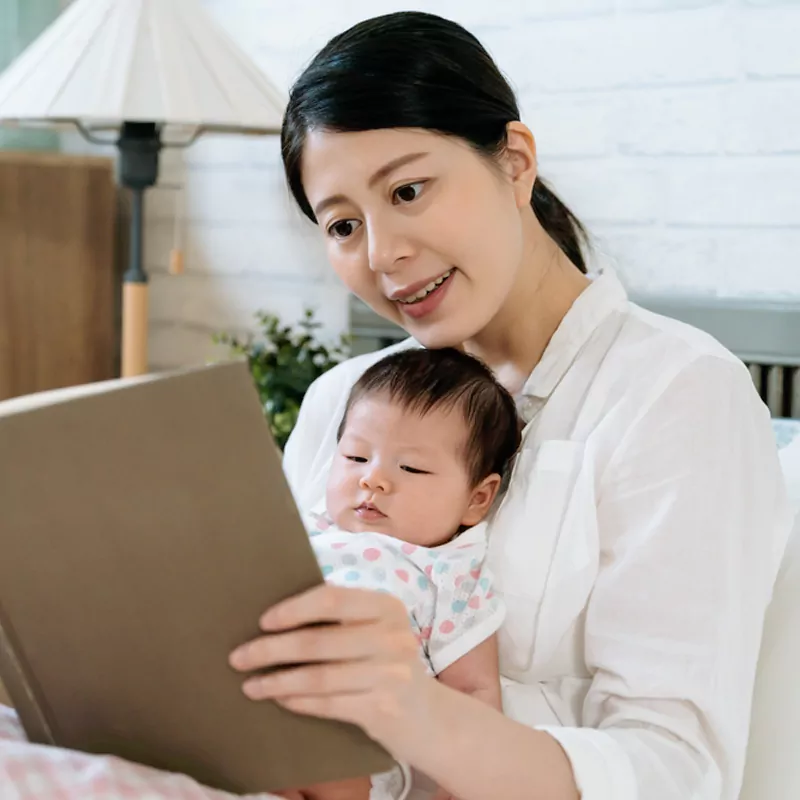
Young children burn more calories through physical development activities than any other type of action and make a positive contribution to a wide range of health benefits. It also helps children to understand their bodies for what they can do rather than what they look like. This helps young children to have a better body image, self-confidence and a greater sense of achievement.
Physical development in early childhood is important to stay fit and healthy. Physical play gets your child moving, from making big movements like running and jumping to small movements like picking up a pencil or tying a shoelace.
Physical development in early childhood is the growth and development of both the brain and body and involves developing control of muscles and physical coordination. This control is used in a whole range of skills of daily functioning and encompasses a child’s ability to do a range of different tasks, such as speaking, making friends and understanding the world around them.
About My Gym
My Gym involves children in dynamic games, physical activity and movement that help in building neural networks in the brain. Customizing its enrichment programs and workshops to make it easier for children to acquire intellectual skills, navigate complex social situations, and nurture emotional development.
Please visit any of our centres to learn more about how My Gym supports “whole-child development” through bespoke physical activities. Choose a day when you will be relatively free and come over with your child in tow. Your child could be an infant (as young as 6 months), a toddler or a preschooler, age is not a bar for enrolling.
My Gym has perfected the art of developing physical activities to improve gross and fine motor skills and has specially designed programs that will lay a firm foundation for personal, academic and future growth by involving your child in age-appropriate structured and unstructured physical activities and developing thinking and problem-solving skills.
Please note: My Gym classrooms are thoroughly sanitized every day — the tables, the chairs, the children’s activity stations and everything else the child might touch is made safe and clean. Please wear a mask, wash your hands frequently, and practice social distancing.
This post is originally posted on MyGym Blogs.




























